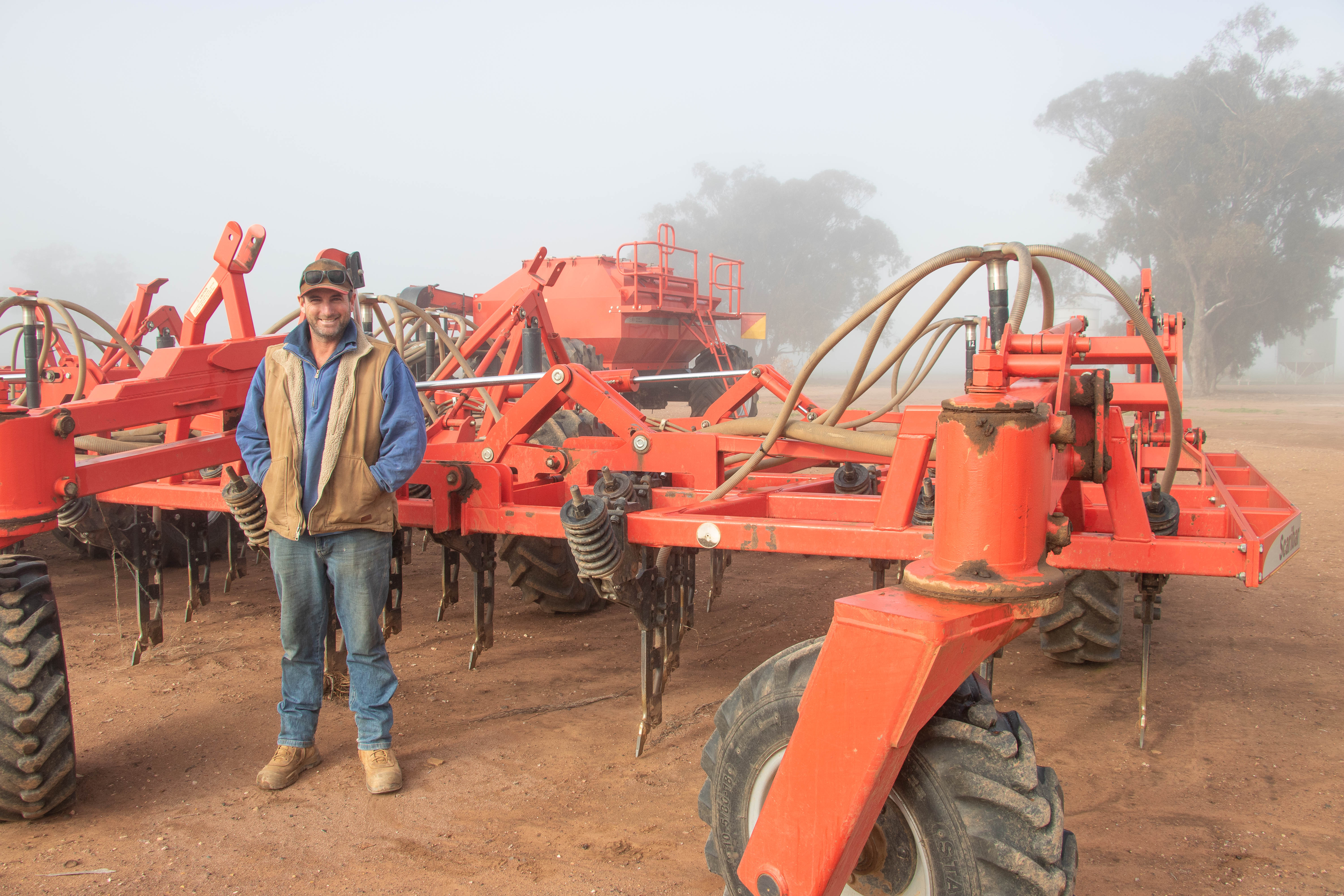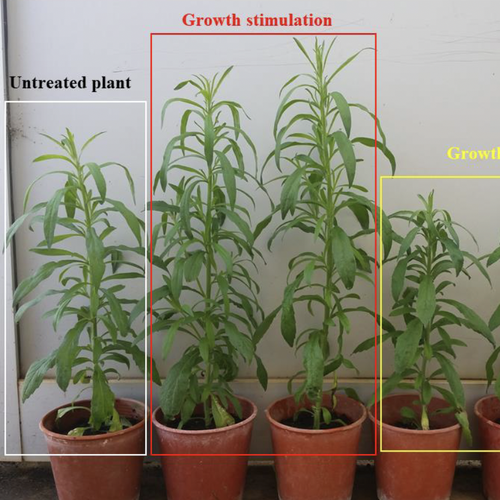By Cindy Benjamin
Having a large cropping program to manage, Jason Coleman keeps his family’s crop rotation simple and concentrates on optimising their profitability. He constantly reassesses their weed management practices and adapts their farming methods to improve the long-term sustainability of their business.
Jason is the third generation of the Coleman family to farm Moascar in the Temora district of NSW, along with his wife Stacey, his parents Peter and Lyn, and three permanent staff members.
The Colemans grow hybrid canola varieties for their high yield, and having a highly competitive crop in each paddock every second year is a very effective, non-herbicide tactic that provides paddock-wide weed control.
If weed pressure starts to build up, the Colemans implement a double-break tactic of vetch brown manure followed by canola to run down the weed seedbank before returning to wheat.
They are also prepared to spray out weedy patches in wheat crops as required, choosing to sacrifice small areas of the crop to reduce weed pressure for future years.
By 2009, the family had phased out their sheep enterprise and implemented a controlled traffic farming system with interrow sowing.
They use a range of stubble management tactics to ensure even crop establishment and optimal herbicide application conditions for early weed control.
In the past four or five years, Jason says they have had several big crops in a row, which has caused stubble management issues at seeding.
“Under these circumstances, we burnt most of the wheat stubble and mulch the canola stubble with harrows or a Kelly chain,” he adds.
“Burning the wheat stubble provides a weed control benefit similar to narrow windrow burning, which we have practised for more than 20 years.”
Following a high-yielding season, a blanket burn in autumn to reduce the stubble load is also a cheap non-herbicide tactic which helps kill weed seeds at, and near, the soil surface – and reduces slugs.
In lower-yielding years, they usually harvest low to the ground, leaving shorter standing stubble, which interferes less with pre-emergent herbicide applications and allows interrow sowing.
If weeds establish in less competitive crops, Jason attaches a chute to the harvester to collect the weed seeds into a narrow windrow.
He follows up with a hot burn of the windrows the following autumn to kill the weed seeds collected at harvest.

“After attending WeedSmart Week in 2023, I decided to go back to 250mm row spacing after sowing on wider spacing for the previous 15 years,” Jason says.
“The evidence is clear the narrower row spacing gives crops a competitive advantage over weeds,” he says.
“Having also reduced the stubble load after big crops, the tined seeder works well to interrow sow on the narrower rows, and we can use a broader range of pre-emergent herbicides more effectively.”
This year, WeedSmart Week is in Geraldton, WA, on July 29/30, showcasing how the Big 6 tactics are safeguarding the profitability of large-scale cropping enterprises.
Having noticed areas around the farm which consistently grow poorer crops and allowed more ryegrass to grow, Jason has been grid sampling the farms for several years to identify areas of low soil pH.
They have implemented a liming program on their predominantly red loam and red-brown clay soils to lift the pH to around six across the farms to promote even crop growth and reduce the opportunities for weedy patches to establish.
“Our other recent priorities have centred on using desiccation as a strategic weed control tool, keeping our non-crop areas weed-free, and monitoring for weeds more often – recording size, location and numbers, across the farms,” he says.
The Colemans recently purchased a self-propelled Case Patriot 4350 sprayer with pulse width modulation (PWM).
This technology gives the operator more flexibility to adjust pressure without compromising ground speed and water rate.
Turn compensation also helps avoid low-dose application around trees and power poles.
In 2020, they purchased a WEED-IT boom to help them manage herbicide-resistant weeds in summer fallow.
They use the double-knock tactic with a blanket spray of glyphosate followed by the WEED-IT to apply paraquat with a Group 14 [G] spike 14 days later to control fleabane and any other survivor weeds.
Jason makes it a priority to treat weeds before they grow large or become stressed.
The Colemans are contending with patches of glyphosate-resistant annual ryegrass and long-term resistance to ‘fop’ herbicides. Every few years they test their wild oats and annual ryegrass populations for susceptibility to the key herbicides.
With valued input from their agronomist, Craig Warren from Nutrien Ag Solutions in Temora, the Colemans follow a diverse herbicide program, optimise spray efficacy, stop weed seed set and maximise crop competition.
By using all the tactics in the WeedSmart Big 6 strategy, the Colemans are keeping weed numbers low and reducing the impact of herbicide resistance on their farming enterprise.
For more information about stubble and weed management, visit the WeedSmart website: www.weedsmart.org.au




